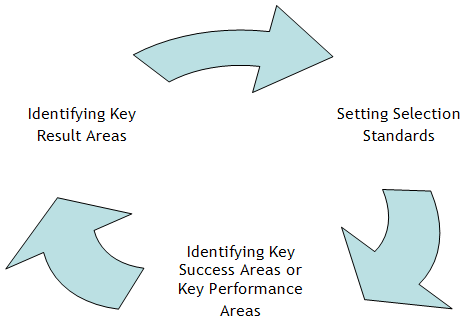Advantages and Disadvantages of Job Analysis
April 3, 2025
 Advantages and Disadvantages of Job Analysis
Advantages and Disadvantages of Job Analysis
Though job analysis plays a vital role in all other human related activities but every process that has human interventions also suffers from some limitations. The process of job analysis also has its own constraints. So, let us discuss the advantages and disadvantages of job analysis process at length. Advantages of Job Analysis Provides First…
 Approaches to Job Design
Approaches to Job Design
Job design is the next step after job analysis that aims at outlining, and organizing tasks and responsibilities associated with a certain job. It integrates job responsibilities and qualifications or skills that are required to perform the same. There are various methods or approaches to do this. The important ones are discussed below Human Approach…
 Benefits of Job Rotation
Benefits of Job Rotation
Job rotation is considered as an effective tool for successful implementation of HR strategy. It is about settling employees at the right place where they can deliver the maximum results. In today’s highly competitive world, this can be proved as the best strategy to find the immediate replacement of a high-worth employee from within the…
A major change has been observed in the world of work since 1980s. The era of structured jobs, packed or fixed work schedules, male-dominated working culture and no family intruding started diminishing gradually.
Companies and employees around the world faced dramatic effects of modernization, flexibility in work schedules, job sharing, work from home options and employee-supportive policies, etc. All thanks to the then managers who analyzed the importance of fitting an individual at a job he or she excelled at to increase the company turnover, employee satisfaction and achieve a professional-personal life balance. And all this was possible by analyzing the worth of a specific job and collecting genuine job-related data.
A proper job analysis, hence, may prove to be a turning point for an organization. It not only creates the right job-candidate fit but also enhance the success of management practices, which in turn, lays the foundation for a strong organization.
A step-by-step process of discovering the different aspects of a job results in a proper regulation of incoming and outgoing of the talent or human resource. Job Analysis thus, started gaining popularity in early 1990s in order to create competitive advantage and has been considered as the basis for other HRM practices since then.
The data collected during the process helps managers in identifying the risks and challenges involved in a specific job and kind of person suitable for delivering the desired duties perfectly. An employer’s recruitment and selection process purely depends on job analysis. Until the recruiting managers do not know about job to be performed, expectations from prospective candidate and the right individual profile required for performing a specific job, it is almost impossible to source or target talent or human resource in order to fill the vacancy.
Job analysis process helps in establishing effective hiring practices and guides managers in identifying the selection criteria required to deliver the expected output. Let’s discuss how.

Different jobs have different requirements. Therefore, the process needs to be performed every time when there is a requirement to fill the job opening. This is a basis for developing questionnaires, devising interview questions and setting selection test papers. The information in the form of scores or grades can then be used for hiring process.
Therefore, a thorough and unbiased job analysis process can help organizations source right candidates, hire the most suitable individual and set appropriate selection standards.
Your email address will not be published. Required fields are marked *